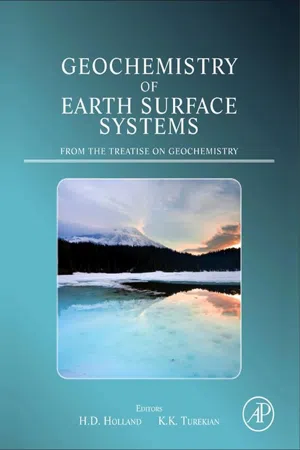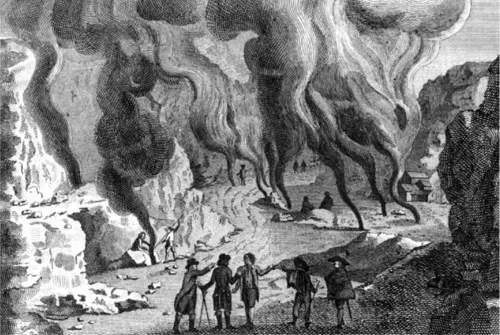
Geochemistry of Earth Surface Systems
A derivative of the Treatise on Geochemistry
- 688 pages
- English
- ePUB (mobile friendly)
- Available on iOS & Android
Geochemistry of Earth Surface Systems
A derivative of the Treatise on Geochemistry
About This Book
Geochemistry of Earth Surface Systems offers an interdisciplinary reference for scientists, researchers and upper undergraduate and graduate level geochemistry students a sampling of articles on earth surface processes from The Treatise on Geochemistry that is more affordable than the full Treatise. For professionals, this volume will provide an overview of the field as a whole. For students, it will provide more in-depth introductory content than is found in broad-based geochemistry textbooks. Articles were selected from chapters across all volumes of the full Treatise, and include: Volcanic Degassing, Hydrothermal Processes, The Contemporary Carbon Cycle, Global Occurrence of Major Elements in Rivers, Organic Matter in the Contemporary Ocean, The Biological Pump, and Evolution of Sedimentary Rocks.
- Comprehensive, interdisciplinary and authoritative content selected by leading subject experts
- Robust illustrations, figures and tables
- Affordably priced sampling of content from the full Treatise on Geochemistry
Frequently asked questions
Information
Volcanic Degassing



1.1 INTRODUCTION

1.1.1 Earth Outgassing, Atmospheric Evolution and Global Climate
Table of contents
- Cover image
- Title page
- Table of Contents
- Copyright page
- Introduction
- Contributors
- 1: Volcanic Degassing
- 2: Hydrothermal Processes
- 3: The Contemporary Carbon Cycle
- 4: The Global Sulfur Cycle
- 5: The History of Planetary Degassing as Recorded by Noble Gases
- 6: Natural Weathering Rates of Silicate Minerals
- 7: Soil Formation
- 8: Global Occurrence of Major Elements in Rivers
- 9: Trace Elements in River Waters
- 10: The Geologic History of the Carbon Cycle
- 11: Organic Matter in the Contemporary Ocean
- 12: The Biological Pump
- 13: The Biological Pump in the Past
- 14: The Oceanic CaCO3 Cycle
- 15: The Global Oxygen Cycle
- 16: The Global Nitrogen Cycle
- 17: Evolution of Sedimentary Rocks
- 18: Generation of Mobile Components during Subduction of Oceanic Crust
- Appendix 1: Periodic Table of the Elements
- Appendix 2: Table of Isotopes
- Appendix 3: The Geologic Timescale
- Appendix 4: Useful Values
- Index